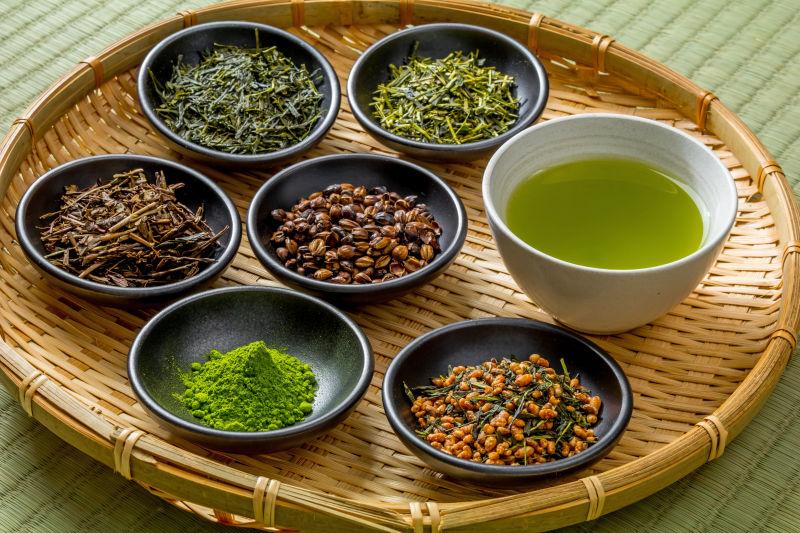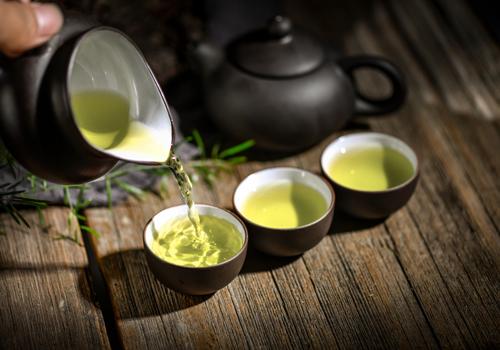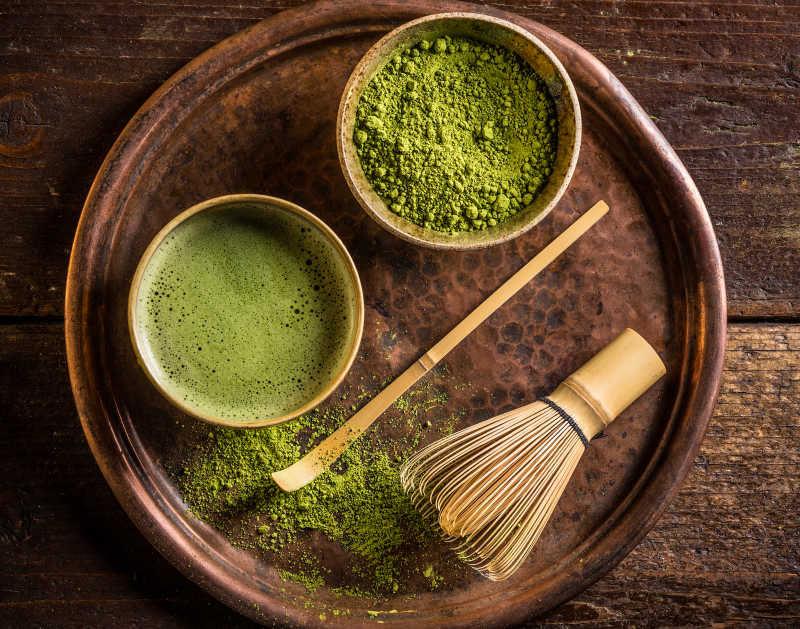Green tea is one of the main teas in the world. It refers to beverages made by taking new leaves or buds of tea trees without fermentation. The brewed green tea soup preserves the green color of fresh tea leaves. The well brewed green tea has a delicate fragrance, an astringent taste, a mellow feeling and a sweet after taste (Hui Gan). The taste of green tea is unique, which is a combination of bitter, astringent, fresh and sweet. Life is like a cup of green tea, mixed with a bit of bitterness in happiness, and a ray of sweetness in harshness. Where are these flavours come from? The answer lies in the ingredients of green tea.

Generally-speaking, the ingredients of tea can be divided into two groups: volatile and non-volatile. The non-volatile substances include polyphenols, amino acids, organic acids, caffeine, vitamins and so on. Among them, the tea polyphenols, in particular catechins and theaflavines, are of great importance to the taste and effects of the tea.
Compared to other tea varieties, green tea offers a combination of unique taste nuances and each of them corresponds to certain substances. Light bitterness comes from tannins and catechins, freshness attributes to amino acids and minerals, sweetness is from amino acids and polysaccharides, and chlorophyll tastes derive from chlorophyll A and B. The flavours of green tea can be mineral, earthy, floral, grassy, or fresh, ranging from strong to tender. This complexity of taste reflects the large number of important active ingredients in green tea, which have excellent health benefits, especially due to their unique combination.

The composition of dried young green tea leaves is analysed as follows (this information varies significantly depending on variety, growing location, quality, cultivation and processing):
| Young green tea leaves % dry weight | |
| Polyphenols (single) | 20-35% |
| Cellulose, lignin, starch etc. | 20-30% |
| Proteins | 10-20% |
| Fats | 3-9% |
| Mineral substances | 4-8% |
| Polysaccharides | 4-7% |
| Amino acids | 3-4% |
| Caffeine | 2-4% |
| Chlorophyll and carotenoids | 2-3% |
| Volatile compounds | Traces |
Source: Kumar, R., et. al.: Black Tea: The Plants, Processing/Manufacturing and Production, Tea, 2013, S. 51.; vgl. 1, S. 6.
When dried, green tea contains a very high amount of valuable active substances, especially in catechins, flavanols, proteins, polysaccharides, fatty acids, vitamins, minerals, trace elements, amino acids, caffeine, essential oils, chlorophyll and numerous other secondary plant substances. The special feature of the green tea plant—Camellia Sinensis— is that its ingredients are present in a highly water-soluble form but not in an edible form. Put differently, if the tea leaves were to be eaten and not steeped in hot water, our body would not be able to utilise a certain portion of the active substances to the same extent, or at all. This factor distinguishes green tea from numerous other large medicinal plants, whose extraction of the ingredients is much more difficult to dissolve in the water. A good example of this is lavender, the ingredients and above all essential oils of which must be obtained mainly through distillation, while the lavender tea has only a very limited effect.

On the other hand, by consuming powdered green tea (e.g. Matcha, Benifuuki powder), some of the non-water-soluble substances are better absorbed. These include the fat-soluble vitamins A (retinol), D, E and K. Nevertheless, the important catechins from green tea are also concentrated and made more available through extraction processes in powder (green tea extract). In particular, the bioavailability of catechins (the main catechin EGCG) has to be paid special attention. The bioavailability helps in several aspects: the flooding in the blood level, compatibility for the liver, reduction of bioavailability through animal fats, and increased by other substances, such as vitamin C.
| Active ingredients in green tea infusion | % |
| Catechins | 30-42% |
| Flavonols | 5-10% |
| Caffeine | 3-5% |
| Theogalline | 2-3% |
| Theobromine | 0.1% |
| Quinic acid | 2% |
| Theanine | 4-6% |
| Chlorophyll and carotenoids | 0.02% |
| Minerals | 6-8% |
In the most important varieties of green tea, the above-mentioned ingredients are found in various concentrations and combinations. This is mainly due to the use of different parts of the tea plant (buds, leaves, leaf veins, stem), various cultivation and production methods (particularly shading, pulverising, rolling methods and use of fertilisers) and the time of year that the harvest take place (first to fourth harvest/tea picking). Consumers should take advantage of this and drink various varieties of tea in changeable quantities and at different times.
Reference: GREEN TEA INGREDIENTS by Dr. Jörg Schweikart

